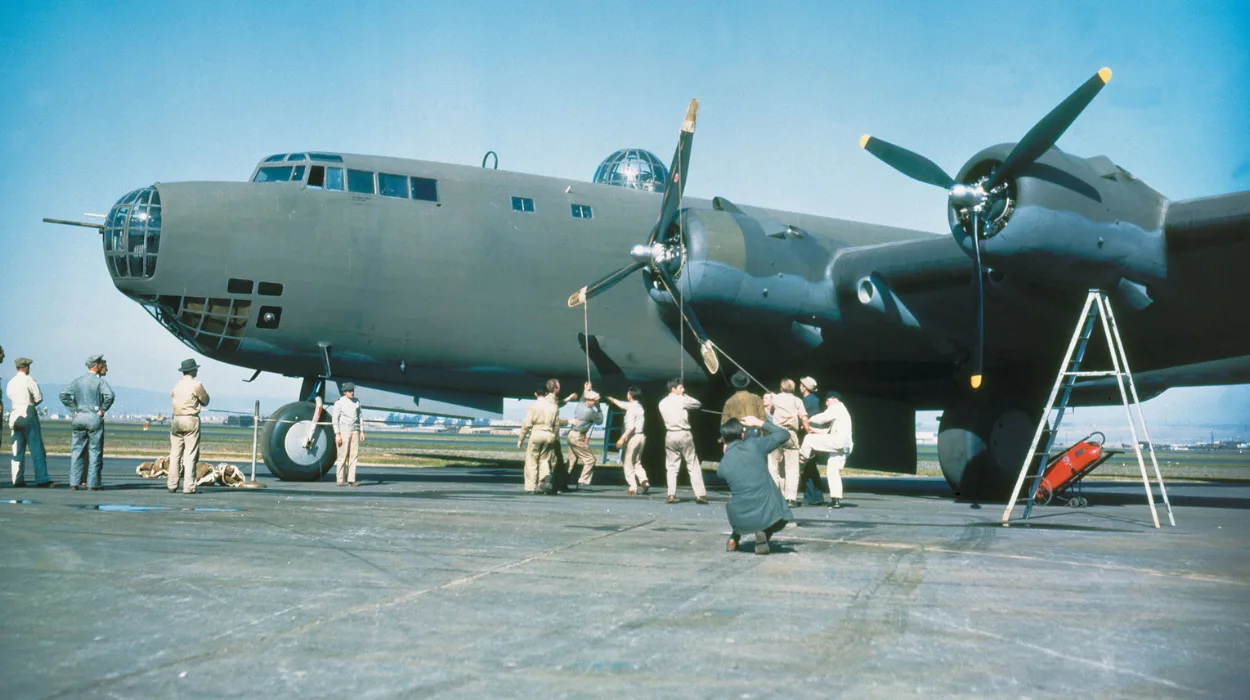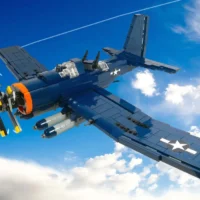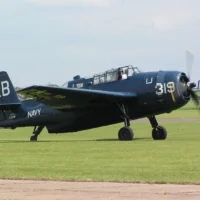The Douglas XB–19 is a technical bomber capable of long distances. Its design was completed in the late 1930s. When it was first flown in designs1942, the XB-19 ranked as the heaviest bomber. The XB-19 served as a valuable testbed for the technologies and strategic conBy 1940, the project’s ambition, which bombers during World War II. This article had significantly accelerated development timelines. This was in partacy and operation.
Origins and Development
The XB-19’s origins date back to 1935. In 1935, the United States Army Air Corps requested a long-range bomber capable of flying continents with a flight range of up to 8,000 miles. The specifications emphasised range and payload, with the aim of developing a plane that could be used to hit targets from extremely long distances. The XB-19’s fuselage is semi-monocoque and primarily made of craft Com, with some steel own player in military aeronaut massive wings equipped with Fowler flaps government in 1936. The design landing of the aircraft is XBLR-2. The goal of the project wasn’t to produce craft immediately but rather to test out and demonstrate new technologies.
The designs took a long time to complete due to their complexity and novelty. They also had a limited deadline before World War II.
By 1940, the aircraft’s official designation, XB-19, had significantly accelerated development timelines. This was in part due to the project’s ambition, which involved integrating advanced materials, engine technology, and aerodynamics with the largest American airframe.
Design
Its size made it stand out. The weight of the aircraft was over 160,000 lbs., an incredible figure. This unprecedented size posed significant structural challenges for the team.
Airframes and Structures
The XB-19 is characterised by a semi-monocoque fuselage made primarily from steel, which was used in high-stress regions. Fowler flaps equipped its massive wings to take off and land, which is crucial for a plane of such weight. The XB-19’s engine size limited its performance. The assembly was composed of a horizontal fin and a high-mounted stabiliser.
The engines and cruise were initially powered by Wright Rand cruise radial AC engines, each delivering 2,000 hp. In nacelles located on the wings of the aircraft, the Wright R-3350 Duplex-Cyclone radial engines provided the necessary thrust to support the heavy and large bomber.
Allison V-3420 liquid-cooled engines were added to the engine in 1944. They increased reliability and overall power.
Crew and Armament
The XB-19 had a design that could house a team of up to 18. This included pilots as well as navigators. It also accommodated bombardiers and gunners. The cockpits of the XB-19 were designed to accommodate a crew of up to 18 people, including pilots, navigators and bombardiers.
Defence armament consisted primarily of machine guns mounted on powered rotating turrets or in movable positions. This bomber could also carry an impressive 18,700 pounds of explosives, a payload that far exceeded that of most other bombers.
Performance
Despite its highly advanced design, the XB-19’s engine size limited its performance. The bomber could reach speeds of up to 224mph and cruise at around 135mph. Even though these were impressive figures for their time, it was important to note the many trade-offs associated with building such an enormous aircraft.
Operational History
The XB-19 flew for the first time on 27 June 1941. Piloted by MaThe bomber’s mass production was questioned by Stanley M. Umstead & Eddie Allen. The flight demons marked an important milestone in American aviation.
While the XB-19 wasn’t designed to fight, it has undergone extensive testing. The bomber was used to evaluate various aspects—its sheer dimensions posed challenges, large bay configurations of bombs, and systems for long-range navigation. These tests were a valuable source of data for the subsequent design and development of heavy bombers.
The XB-19 displayed various demonstrations for foreign officials and military leaders. By the time this aircraft was operational, wartime technological advances had already rendered it obsolete. B-29s, advanced bombers that perform, had already been developed.
XB-19 heavy bomber, actions, and Challenges
The XB-19 was long-range to highlight several of the challenges involved in operating and maintaining long-distance aircraft.
- Price and complexity. The bomber’s mass production was questioned due to its long duration and expensive production costs.
- Performance constraints. The aircraft’s low speed makes it more vulnerable to hostile fighters, as well as anti-aircraft gunfire.
- Challenges in Logistical Management—The XB-19’s sheer dimensions posed challenges to logistics, including the necessity for specialised tools and equipment.
- Technological Obsolescence – By the time XB-until sign was ready to be tested, improvements in aviation had outpaced their development, reducing its usefulness as a warplane.
Legacy
While the XB-19 bomber never saw production, its impact on aviation technology and strategic planning will live on. Some of its key design features influenced future bombers.
- Large-Scale Aircraft Design – Experiences gained with the XB-19 influenced design principles for late heavy bombers, including mass-produced B-36.
- Long-range navigation and operations. The testing of the Bomber improved techniques for long-distance missions.
- Material Innovations XB-19 lessons learnt contributed to material and structural innovations, enabling more efficient and robust aircraft.
The XB-19 is also a great reminder to keep ambition in balance with practicality. In its development, the XB-19 highlighted the need for innovative projects and the risks that come with undertaking too complex a project without clear operational benefits.
Preservation Methods
The XB-19 remained a serviceable test platform until 1946. After its retirement, the aircraft, like many other prototypes, was scrapped. Although there are no physical remnants, photographs, technical documentation, and personal memories of those involved with the XB-19 have preserved its story.
Douglas XB-19 was a product whose time it belonged. The Douglas XB-19 embodied American aviation’s bold vision and engineering ingenuity in the years before World War II.
Although it was never in combat or mass-produced, the XB-19 made a significant contribution to the advancement of bomber technology. As a result, it left a legacy that was carried on by the better and more efficient aircraft of later years.



